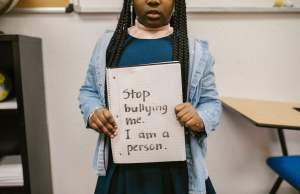Cyberbullying has become increasingly common in recent years, with 59% of American teens facing some sort of online harassment during 2018. Despite this, around 15% of parents still haven’t heard of cyberbullying, and some of those who have don’t really understand what it entails. With this in mind, we’ll share a few important details about cyberbullying including what it is, who is most at risk, and what can be done about it.
First Thing’s First: What Is Cyberbullying?
Simply, cyberbullying is when the internet is used to threaten or harass someone, often over a period of weeks or months. Traditionally, bullying took place away from home, but thanks to our always-connected nature, bullies have plenty of ways to continually harass their victims, even after the school day is over. Here are just a few examples of cyberbullying:
- Abusive messages on social media
- Frequent, unwanted calls
- Creating fake accounts purporting to be the victim
- Posting embarrassing photos or information about the victim
- Revealing personal information like the victim’s address, phone number, or passwords
- Reporting everything the victim posts in an attempt to have it taken down
How Common Is Cyberbullying?
A recent study into cyberbullying found that it’s actually quite common in the US, with 26% of parents reporting that their child was bullied online in 2018. In places like Japan and Russia, however, this number fell to 5% and 1%, respectively. Of course, these figures likely underestimate the full impact of cyberbullying since victims tend to be reluctant to admit that they’re affected.
There are other factors at play, though. The Center for Disease Control and Prevention found that LGBTQ teens were more than twice as likely to be bullied than heterosexual teens. Additionally, there appears to be a correlation between the amount of time someone spends online and their likelihood of being victimized, possibly because of the potential for relationship development and, therefore, conflict on social media.
Where Does Cyberbullying Take Place?
Parents tend to believe that cyberbullying predominantly takes place on Facebook (perhaps because it’s the most well-known social media network). While this platform does account for 37% of reported incidents, the worst offender is actually Instagram. According to the Annual Bullying Survey, conducted by Ditch the Label, 1 in 5 12-20-year-olds are bullied on Instagram. Interestingly, less than 13% of parents considered Instagram dangerous, likely because they’re less familiar with the service.
So can’t you just prevent cyberbullying by stopping your child from using Instagram? In short, no. Research shows that teens tend to be active on multiple social media platforms, so if bullies can’t reach them on one, they’ll just pivot to another. Even if it was possible to block every bully, there’s nothing to stop them from creating a new account and picking up where they left off.
What Can Be Done to Stop Cyberbullies?
A strong first step is restricting access to your child’s social media accounts. For instance, you can ensure that their posts are only visible to friends and reduce the risk of hacking by ensuring that their passwords (and recovery methods) are secure enough.
Most major social networks allow you to report content if it’s intended to harass others. Use this option frequently—even if a particular post or message appears innocent enough on its own, it can be used to illustrate a pattern of bullying when considered alongside similar posts. This could lead to the bullies being suspended or even removed from the platform entirely. Depending on the severity of the bullying, it may also be a good idea to take a short break from social media. Generally, if bullies don’t receive the reaction that they’re looking for, they’ll move on and find another target.
Cyberbullying is a major issue and one that’s particularly difficult to resolve. Cyberbullies will continue to find loopholes and ways to harass their victims until social media networks begin taking this threat more seriously. Until then, though, children should be made aware of the risks of social media, and more importantly, reminded that what they’re going through isn’t their fault.
*Ian Garland is a digital privacy expert who writes for Comparitech.com. He’s especially interested in digital wellbeing and believes that this will underpin the next generation of social media platforms.













